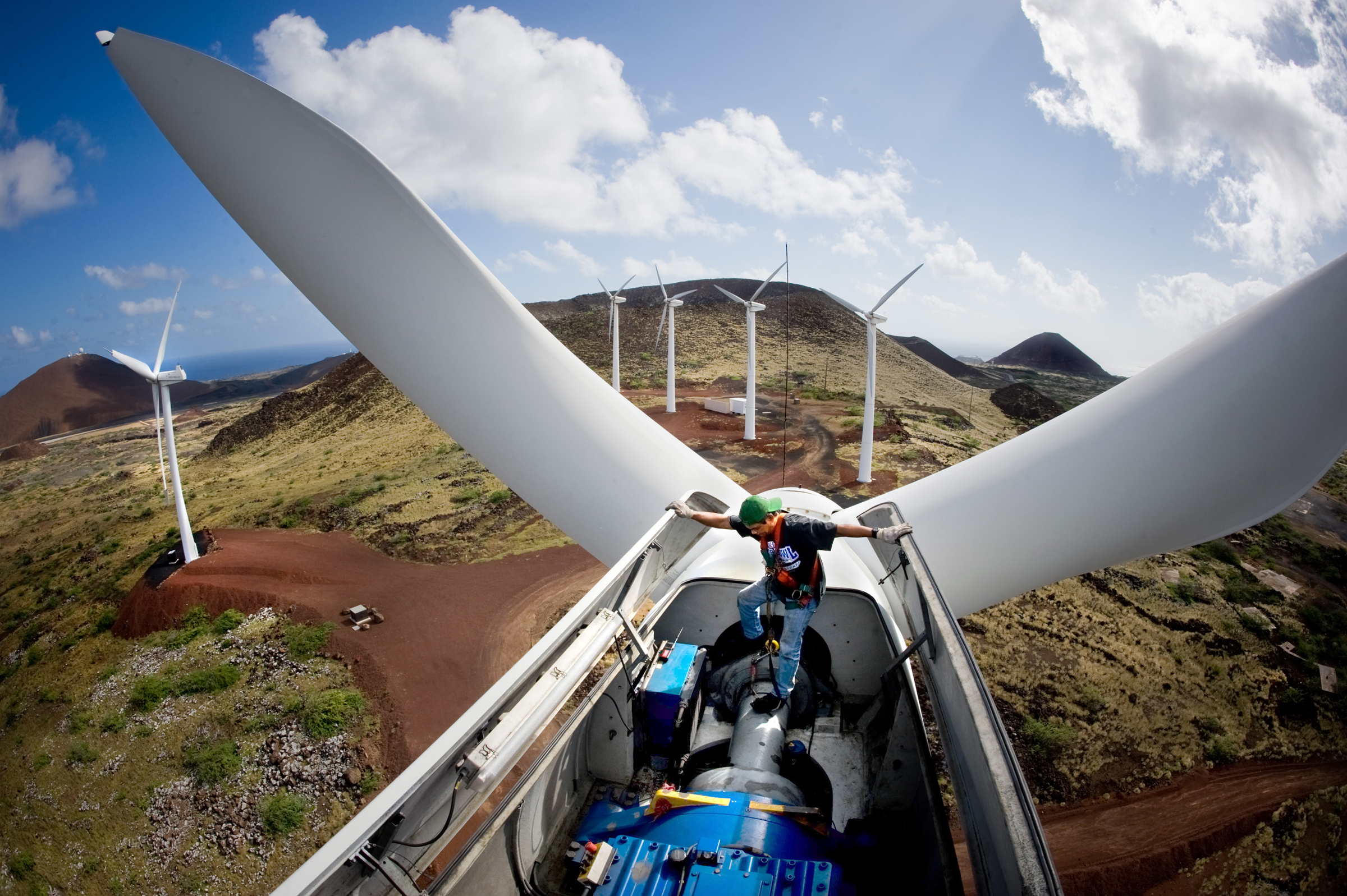
Lubricant demand for use in wind energy applications will grow at a 7.4 percent compound annual rate over the next five years, likely reaching more than 50,000 metric tons consumption by 2020, Kline & Co. estimated.
This is much slower than we have witnessed over the last five years, but is still quite respectable, Sushmita Dutta, Klines project lead for energy, said during a webinar Nov. 2.

Photo: Flickr/U.S. Air Force photo by Lance Cheung
A power house operator/mechanical associate prepares to perform operational checks on the spinning rotor blades and drive line of a 900 kilowatt wind turbine at 45th Operations Group Detachment 2, Ascension Auxiliary Airfield, in the South Atlantic Ocean.
Kline estimated global lubricant consumption in wind energy reached almost 38,000 metric tons in 2015.
Globally, gear oils account for about 70 percent of wind turbine lubricant demand, Dutta said, followed by hydraulic fluids and greases. She noted that the penetration of synthetic lubricants was higher than 80 percent in 2015 due to the increasing need for drain interval extensions. Other key factors impacting lubricant demand growth in the wind energy industry include growth in wind energy capacity and penetration of direct drive turbines, which eliminate gearboxes.
The wind turbine lubricant market is witnessing strong growth, and penetration of synthetics is already quite high, Dutta said. Its an attractive market for a company looking to expand its sales of synthetic lubricants, and willing to offer customized products and services.
The installed capacity of global wind energy in 2015 reached about 433 gigawatts, more than nine times its 2004 total, representing 22.2 percent compound annual growth over that period. China accounted for 33 percent of global wind energy installed capacity, growing from just a 2 percent share in 2004. India has also witnessed good growth, Dutta said.
China led the way with more than 140 gigawatts of capacity, followed by the United States. European countries German and Spain, which were the top two markets in 2004, ranked third and fifth in installed capacity.
Kline projects global wind energy capacity will grow at a decelerated compound annual growth rate of 13 percent over the next five years. Though this growth rate is much lower than we have seen over last the last seven years, its still a good growth rate, Dutta said. So this suggests the market is expected to grow robustly. But as the installed base gets larger, the growth rate will be slower over the next five years.
She noted that growth in wind energy capacity in a particular country depends on the power supply-demand situation there, and also on the ability and willingness of government to support the industry. Of all the country markets, we expect China to have the highest growth in terms of installed capacity, she said, followed by India.
Kline conducted its study primarily in China, India, Germany, Spain and the United States – these five markets represent more than 71 percent of global installed capacity. The study also looked at key offshore wind energy markets such as the United Kingdom and Denmark.
The study is titled, Lubricants for Wind Turbines: Global Market Analysis and Opportunities.